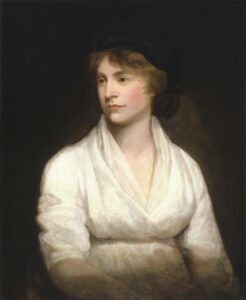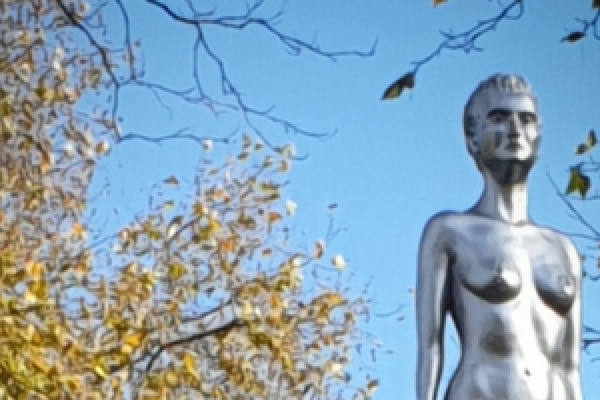In a secluded corner of St Pancras Old Church Cemetery lies the tomb of Mary Wollstonecraft, one of our earliest feminist writers, with the lettering barely visible on the weathered stone monument. Mary, who married and was buried in the church, resided in the area for several years with her husband, William Godwin, whose unintentional actions later played a role in compromising Mary’s legacy.

Mary Wollstonecraft is now renowned for her groundbreaking work, ‘A Vindication of the Rights of Women,’ published in 1792, just a few years after the French Revolution. Her ideas, advocating the equality of women, access to education, and the dissolution of aristocracy for a more egalitarian society, were far ahead of their time.
Born in Spitalfields in Primrose Street in 1759 to a relatively wealthy family, Mary’s early education was limited due to her father’s financial misfortunes. However, her self-education began when she befriended a neighbour’s daughter, Fanny Blood, at the age of sixteen. Facing financial challenges, Mary left home in 1778 and became a companion in Bath. After her mother’s death in 1780, Mary shouldered the responsibility of caring for her younger sisters.
In 1783, Mary, along with Fanny, opened a school in Newington Green to achieve financial independence. There, she met Dr Richard Price, a dissenter and minister, who exposed her to new ideas about education and societal inequalities. Despite the school’s eventual closure, Mary’s experiences fueled her evolving philosophy.
Working as a governess in Ireland and nursing her ailing friend Fanny, Mary returned to London and embarked on a full-time writing career. Acquaintances at Newington Green led her to Joseph Johnson, a prominent publisher, who supported her work. ‘The Vindication of the Rights of Woman’ was published in 1792, marking a turning point in her career.
The subsequent years brought disappointments, with Mary witnessing the French Revolution’s aftermath during a journey to France. Her personal life became turbulent with a love affair, an attempted suicide, and her marriage to William Godwin. Tragically, Mary passed away shortly after giving birth.
Posthumously, William Godwin’s biography of Mary revealed her affair with Gilbert Imlay, tarnishing her reputation in Victorian eyes. It wasn’t until the 1960s, during the rise of the women’s movement, that Mary Wollstonecraft’s work regained recognition. Today, she is acknowledged as a key figure in the progress towards women’s rights.
Embark on our Suffragette Walk with Kirstie
Book a guided walk now
Author
-

I love the history of London, the stories, the scandals, and the wonderful architecture: just a few of the aspects that make for great guided tours in the capital. My London walks will take you to historic sites as well as lesser-known locations, revealing the diverse makeup of the people who lived and worked in London through the ages.
View all posts


